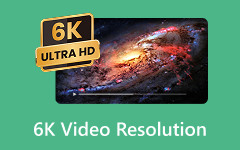Acronyms are more than common in the TV market, with two of the most popular being UHD and QLED. On the face of it, they can be interchangeable, yet they are the various facets of display technology. UHD or Ultra High Definition is the resolution of a screen, and QLED is a panel type that influences brightness and color. Understanding these terms is crucial when deciding which TV best suits your needs. This article will compare UHD vs QLED, explain how they work, and explore how UHD content plays across modern televisions.

Part 1. What Is QLED and UHD?
TV shoppers often stumble when comparing Samsung’s Crystal UHD with QLED models. The names sound similar, but they point to different things.
- UHD (Ultra High Definition): This refers to the screen’s resolution, typically 3840 × 2160 pixels, also called 4K. It means sharper details, more clarity, and a higher pixel count compared to Full HD. UHD is a resolution standard, not a display technology.
- QLED (Quantum Dot LED): This is a panel technology developed by Samsung. It uses a coating of quantum dots with an LED backlight to boost brightness, color accuracy, and contrast. Unlike UHD, QLED is how the image is displayed, not the resolution itself.
Samsung’s Crystal UHD is not a new resolution; it is simply a TV product line that uses UHD panels. By looking at Crystal UHD vs QLED, you can see how resolution and panel technology play different roles in picture quality.
Part 2. Detailed Comparison of QLED and UHD
When comparing QLED and UHD, the first thing to note is that they are not the same type of specification. QLED refers to a display technology, while UHD describes a resolution standard. This means a QLED TV can also be a UHD TV, but not all UHD TVs use QLED panels. To better understand the difference between QLED and UHD, let’s look at their core features.
What Are Their Similarities:
- Resolution: Both QLED and UHD TVs typically support 4K resolution, giving you sharp images and clear details. Some higher-end models even go up to 8K, offering future-proof visuals for when more content becomes available.
- Connectivity: Whether you pick QLED or UHD, you’ll usually get HDMI 2.0 or 2.1 ports, which are great for smooth gaming and streaming. They also come with Bluetooth for wireless devices like speakers or headphones, and Wi-Fi for easy internet access.
- Smart Features: These two types of TV operate on the Samsung Tizen operating system that comes with in-built voice assistants such as Alexa, Google Assistant, or Bixby. They also enable numerous applications, including Netflix, Disney+, YouTube, and other leading streaming applications.
- HDR Support: The QLED and UHD TVs can have HDR or High Dynamic Range formats such as HDR10 or HDR10+ that enhance contrast and make colors appear more realistic.
- Design and Usability: The two models are similar in slim bezels, smooth constructions, and simple remote controls, which make them stylish and easy to adopt in any household set-up.
| Features | QLED | UHD |
|---|---|---|
| Definition | Display tech using quantum | Resolution Standard is 4K or 8K |
| Picture Quality | Brighter with richer color | Sharp detail from high resolution |
| Backlight | LED backlight with quantum dot filter | Varies by panel, such as LED, OLED, and more |
| Brand Focus | Mainly Samsung | Across different branded TVs |
| Performance | Strong brightness, less deep blacks than OLED | Depends on the panel used |
Which One Should You Choose? 4K UHD vs. QLED?
- For Bright Rooms: QLED models like the Samsung Q90T or TCL 6-Series excel, as they combat glare with strong brightness and vivid colors.
- For Gaming: Both UHD and QLED TVs handle 4K gaming, but QLED options like the Samsung Q80T often add HDMI 2.1 support and faster refresh rates.
- For Budget Buyers: UHD TVs like the LG UP8000 or Sony X80J deliver excellent 4K clarity at a more affordable price.
In the end, choosing between QLED and UHD depends on what matters most to you. If you want a brighter screen with more vibrant colors, QLED is a strong option. If your priority is getting sharp 4K detail at a lower cost, a standard UHD TV will serve you well. Both can deliver an excellent viewing experience; you just need to match the features with your needs and budget.
Part 3. How to Upscale Videos to UHD for Playing on UHD TVs
Not every video you watch is filmed in 4K, but with the right tool, you can make the most of your UHD TV. Tipard Video Converter Ultimate is a reliable option for this, offering AI-driven enhancement that lets you upscale any video to UHD or 4K while keeping the best quality. It also supports group conversion so that you can process entire libraries at once, and it works with nearly all major formats.
Much like comparing Samsung Crystal UHD vs QLED, where both deliver UHD resolution but with different strengths, Tipard ensures that any video resolution looks sharper, brighter, and closer to the premium experience your TV promises.
Step 1 Tick the download button below to get Tipard Video Converter Ultimate, then install and open the program.
Step 2 Hit the + button to import the video you want to upscale. You can also upload multiple files and convert them all at once.
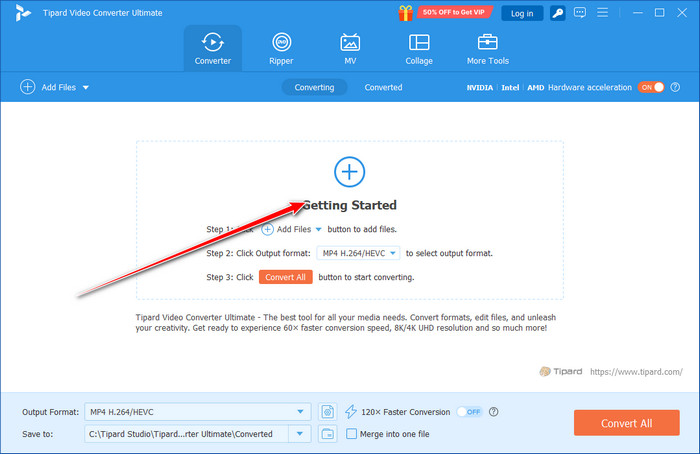
Step 3 Open the format dropdown, type 4K in the search bar, and pick the 4K UHD option as your output.
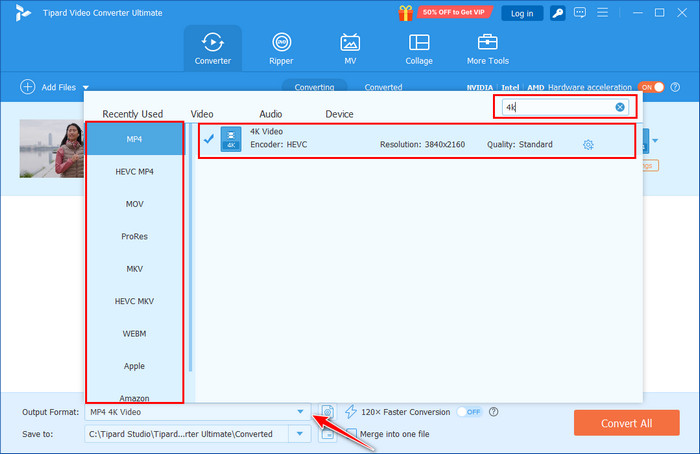
Step 4 Tick Convert All to start the process. In a few moments, you’ll have your video in 4K UHD quality, ready to play on your UHD TV.
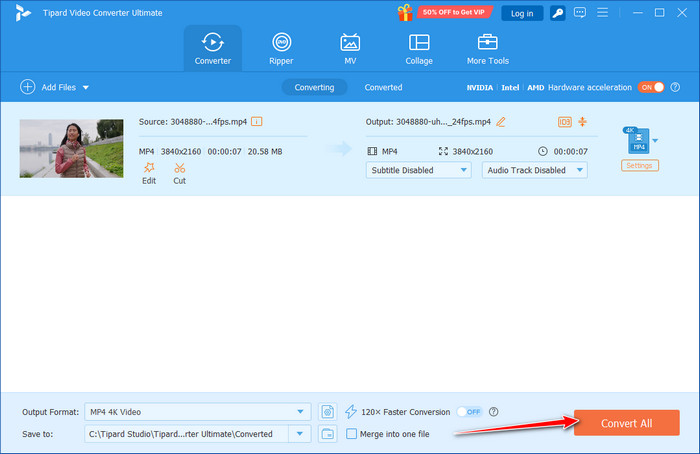
With Tipard Video Converter Ultimate, you can make any video look sharp and clear on your UHD TV. Much like knowing the difference between Crystal UHD and QLED, upscaling helps you get the best picture quality, so everything you watch feels closer to a true 4K experience.
Part 4. Can UHD TVs Play 4K UHD Blu-rays?
While UHD TVs are designed to handle 4K video resolution, playing 4K UHD Blu-rays directly can be tricky because most discs are protected by encryption and region codes. This is where Tipard Blu-ray Converter comes in. The software allows you to rip 4K UHD Blu-ray into such formats as MKV or MP4 without those restrictions. It maintains the finest quality, supports the lossless output as well and enables editing or combining files prior to saving them.
Whether you own a Samsung Crystal UHD or a QLED model, both will display crisp visuals, and Tipard ensures you can actually enjoy that content without limits.
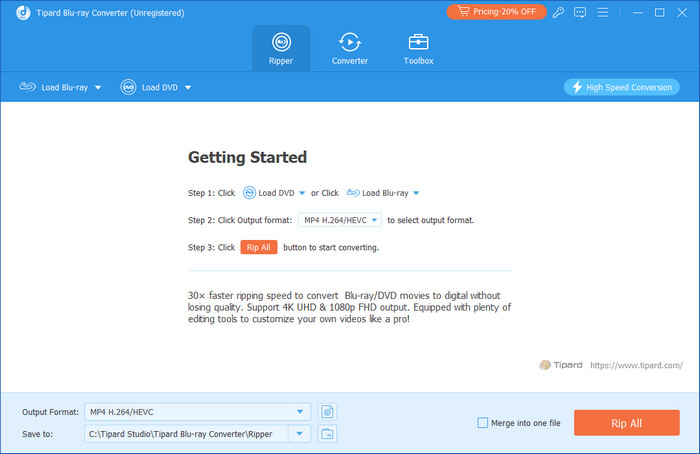
Conclusion
After all, it is a matter of what you desire out of your TV. UHD informs you about the resolutions, whereas QLED is all about the brighter brightness and more colorful. But you might be asking yourself, is QLED better than the UHD? The solution is that QLED tends to provide a more lively screen, and both of them can provide you with a fantastic viewing experience, assuming your budget and requirements.



